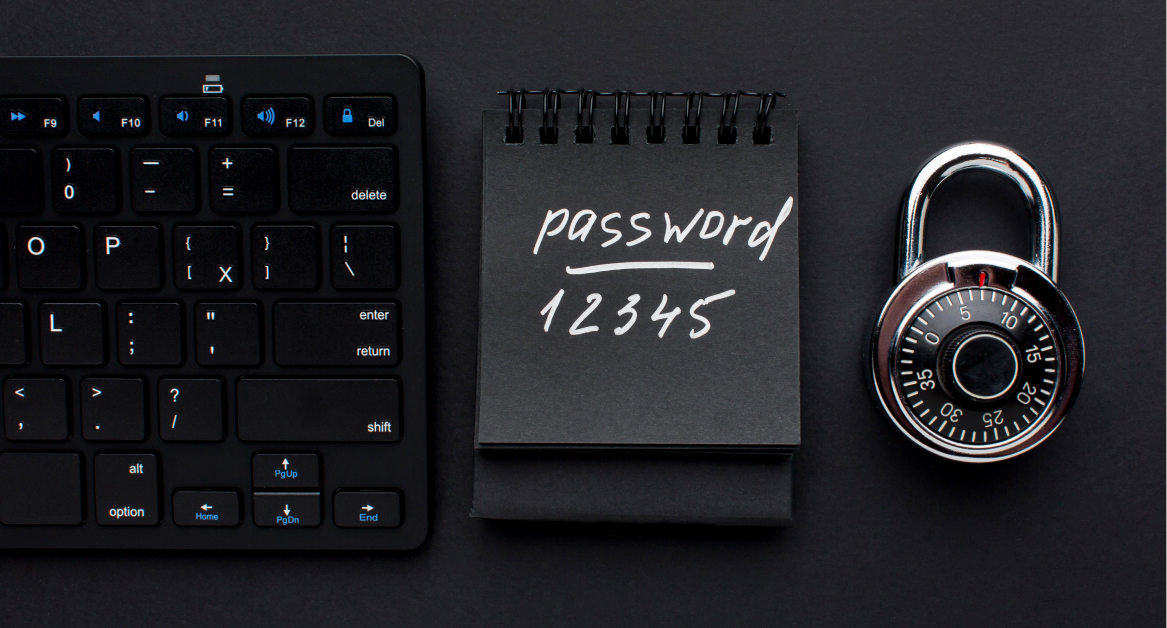You might have some passwords stored in your Google Password Manager right now… but are they really safe?
While saving passwords in your browser is convenient, convenience doesn’t always mean security.
Google Password Manager offers a convenient solution that seamlessly integrates with Google services to help users securely store and manage their credentials. In this guide, we’ll delve into its key features, provide security enhancement tips, and address common troubleshooting scenarios to ensure a smooth user experience.
What is Google Password Manager?
Google Password Manager is a built-in tool that helps users securely store, manage, and autofill passwords across Google Chrome and Android devices. It simplifies password management by automatically saving login credentials and suggesting strong passwords when creating new accounts.
Unlike third-party password managers, Google Password Manager is integrated directly into Google services, allowing seamless access across multiple devices with a Google account. Whether you’re signing in on your Android and Chrome setup or switching between desktop and mobile, your saved credentials stay synced and accessible.
How Google Password Manager works
- Saving passwords – When you enter credentials in a sign-in form, Google prompts you to save them. These saved passwords are then stored securely in your Google account.
- Autofill and auto-login – When you revisit a site, Google Password Manager automatically fills in the password field, making the login process effortless.
- Password generation – It suggests strong passwords for new accounts, reducing the risk of a data breach caused by weak or reused credentials.
- Cross-device access – Stored passwords sync across Android devices, desktops, and even iOS with Chrome Password Manager.
- Security checkup – It alerts users about compromised passwords and potential security threats.
Google Password Manager is a convenient and effective tool, but to maximize its security benefits, users must follow best practices. Up next, we’ll explore how to enhance your security while using Google’s password management system.
Key features of Google Password Manager
Whether you’re using Google Chrome on a desktop or logging into apps on Android devices, this tool ensures that your credentials are stored safely and easily accessible when needed.
1. Secure password storage
Google Password Manager automatically saves your login credentials when you sign in to a website or app. These saved passwords are linked to your Google account, allowing you to access them across all your devices, including Android, Windows, macOS, and even iOS with Chrome Password Manager.
2. Autofill and seamless sign-in
When you revisit a site or open an app, Google Password Manager automatically fills in your username and password in the sign-in form. This eliminates the need to remember multiple passwords while ensuring a fast and seamless login experience.
3. Password generation for stronger security
When creating a new account, Google can generate strong passwords and save them automatically. This reduces the risk of using weak or repetitive passwords, which are common targets for data breaches.
4. Password checkup for security risks
Google Password Manager includes a built-in security checkup feature that:
- Alerts you if any of your stored credentials have been exposed in a data breach
- Identifies weak or reused passwords
- Suggests updates to improve security
To check for compromised credentials, open Google Chrome, navigate to Google Password Manager, and tap the password security checkup option.
5. Cross-platform accessibility
Whether you’re switching between your Android and Chrome setup, using a Samsung password manager, or accessing accounts from a desktop, Google ensures seamless password syncing across devices.
6. Biometric authentication for added security
For Android users, Google Password Manager PIN, fingerprint, or face recognition can be used as an extra layer of security when accessing saved passwords. This prevents unauthorized access, especially on shared devices.
7. Easy password export and import
Google Password Manager allows users to export and import passwords securely. This is useful when switching to another password manager like Apple Password Manager or migrating credentials between different accounts.
Google Password Manager is powerful, but security ultimately depends on how users handle their credentials. In the next section, we’ll explore best practices to enhance your security while using this tool.
9 tips for better security with Google Password Manager
While Google Password Manager simplifies password management, users must take extra steps to enhance security. Cyber threats and data breaches are increasingly common, making it essential to follow best practices when storing and managing credentials.

1. Use a strong Google account password
Your Google account is the key to accessing all saved passwords. If hackers compromise this account, they could gain access to your stored credentials. Strengthen your Google account security by:
- Using a strong password with a mix of letters, numbers, and symbols
- Enabling two-factor authentication (2FA) for an added layer of protection
- Regularly updating your password and avoiding reusing old ones
2. Enable biometric authentication on mobile devices
On Android devices, you can secure your password manager by enabling biometric authentication such as fingerprint or face recognition. This ensures that only you can tap the password to access stored credentials.
To enable this:
- Open Chrome Password Manager on your device
- Go to Settings > Google Password Manager PIN or biometrics
- Enable fingerprint or face unlock
3. Regularly check for compromised passwords
Google’s password checkup alerts you if any of your stored passwords have been leaked in a data breach. If you receive a security alert:
- Change the affected password immediately
- Use a unique and strong password
- Avoid reusing the same password across multiple accounts
To check compromised credentials, open Google Password Manager, navigate to password checkup, and review security alerts.
4. Use single sign-on (SSO) when available
Many services support single sign-on (SSO), allowing users to log in with their Google account instead of creating separate credentials. This minimizes the number of passwords you need to manage while reducing the risk of forgotten or weak passwords.
5. Be cautious with autofill on shared devices
While autofill makes logging in easier, it can be risky on shared or public devices. If you must use a shared device:
- Avoid saving passwords in Google Password Manager
- Always sign out of your Google account after use
- Clear browsing data to remove stored credentials
6. Keep your browser and devices updated
Using outdated software increases security vulnerabilities. Regularly update Google Chrome, Android and Chrome systems, and any connected devices to ensure you have the latest security patches.
7. Store recovery options securely
If you forget your Google password or lose access to your account, recovery options are crucial. Make sure your backup email and phone number are updated so you can regain access in case of an issue.
Google Password Manager is a secure and convenient tool, but good security habits make it even more effective. In the next section, we’ll look at common issues users face and how to troubleshoot them.
8. Avoid storing sensitive information in Google Password Manager
Google Password Manager is designed to store login credentials, but it is not a secure vault for storing highly sensitive information like bank PINs, Social Security numbers, or private notes. For such data, consider using a dedicated encrypted password manager with secure storage capabilities.
9. Use passkeys for enhanced security
Google has introduced passkeys as a safer alternative to traditional passwords. Instead of relying on a password field, passkeys use cryptographic authentication linked to your device, making it harder for hackers to steal credentials.
- Passkeys eliminate risks associated with data breaches
- They work with single sign-on (SSO) for faster and safer access
- They are resistant to phishing attacks
To enable passkeys, visit Google Password Manager settings and check for supported accounts.
Troubleshooting common issues with Google Password Manager
While Google Password Manager is a convenient and secure tool, users may encounter issues when managing their saved passwords across devices. Below are some common problems and how to fix them.
1. Google Password Manager is not saving passwords
If Google isn’t prompting you to save passwords in a sign-in form, try the following:
- Ensure password saving is enabled in Google Chrome
- Open Chrome > Go to Settings > Click Autofill and Passwords > Toggle on Offer to save passwords
- Check if you’re signed into your Google account
- Disable conflicting extensions (some third-party password managers may block Chrome’s autofill)
- Restart your browser or device
2. Autofill is not working on Android and Chrome
If passwords are not auto-filling on Android devices or Google Chrome, follow these steps:
- Open Chrome Password Manager and confirm that the correct credentials are stored
- Enable autofill:
- On Android: Settings > Google > Autofill service > Select Google Password Manager
- On Chrome: Settings > Autofill and Passwords > Toggle on Autofill passwords
- Clear browser cache and cookies
- Restart the browser or device
3. Google Password Manager PIN or biometrics not working
If your Google Password Manager PIN, fingerprint, or face unlock isn’t functioning, try:
- Checking if biometrics is enabled:
- Go to Settings > Google Password Manager > Security Settings
- Updating your device software (older versions may not support certain biometric features)
- Resetting your Google account security settings
4. Can’t access saved passwords
If you’re unable to access saved passwords, consider these solutions:
- Verify you are logged into the correct Google account
- Check if syncing is enabled:
- Open Chrome > Settings > Google Sync > Ensure Passwords is toggled on
- Try accessing your passwords directly at passwords.google.com
- Reset your Google password if you suspect an account issue
5. Password checkup alerts keep appearing
Google’s password checkup alerts notify users about compromised passwords, but if they keep appearing:
- Change the flagged passwords immediately to strong passwords
- Remove old or unused passwords from Google Password Manager
- Disable password checkup notifications if you’ve already taken action
6. Google Password Manager vs. third-party password managers
Some users experience conflicts when using Samsung Password Manager, Apple Password Manager, or other third-party tools alongside Google’s built-in service. To avoid this:
- Choose one password manager as your primary tool
- Disable autofill in the other password managers to prevent conflicts
- Ensure passwords are not duplicated across different managers
What to do if issues persist?
If none of the troubleshooting steps work:
- Update Google Chrome and Android devices to the latest version
- Restart your device and browser
- Contact Google Support for further assistance
Secure your digital life with Esevel
Managing passwords shouldn’t be complicated, and Google Password Manager offers a seamless way to store, autofill, and protect your credentials across Google Chrome, Android devices, and beyond. With features like strong password generation, single sign-on (SSO) support, and password checkups for data breaches, it provides a secure foundation for online safety.
However, security isn’t just about technology—it also requires smart habits. By enabling biometric authentication, regularly updating your Google account password, and staying alert to security risks, you can enhance protection and reduce the chances of cyber threats.
For businesses managing distributed teams, ensuring employees use secure password practices is crucial. Going beyond that, Esevel helps companies safeguard their IT environments by providing device security, IT support, and management tools tailored for modern, remote workforces.






